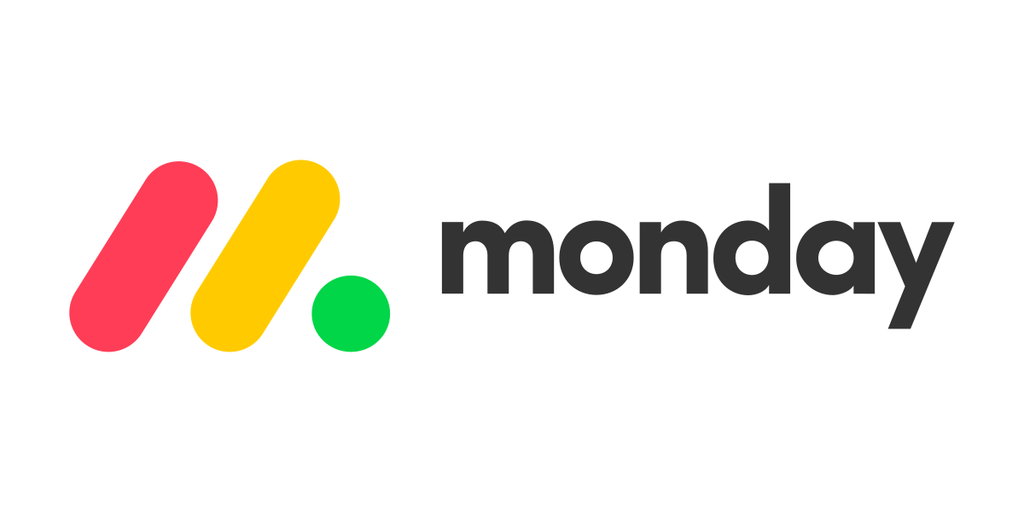- Home
- Services
Services

Monday.com Execute a GraphQL Query Integration
$0.00
Monday.com GraphQL Integration | Consultants In-A-Box Turn Monday.com Data into Action: Smarter Workflows with GraphQL and AI The Monday.com GraphQL integration lets businesses fetch, update, and reshape project data in the precise way they need — no more bulky exports, duplicated effort, or long waits for reports. In plain ...

Monday.com Get a Board Integration
$0.00
Monday.com Integrations Visibility & Automation | Consultants In-A-Box Make Monday.com Integrations Visible, Reliable, and Automated Visibility into integrations is often the missing piece in digital transformation. The "Get a Board Integration" capability in Monday.com lets you see which third-party connections a board ...

Monday.com Get a Group Integration
$0.00
Monday.com Get a Group Integration | Consultants In-A-Box Turn Monday.com Groups into Actionable Workflows: Reliable Group Retrieval for Smarter Automation Being able to fetch a group from Monday.com — its name, color, position, and the IDs of the items it contains — is a small technical capability that yields outsized opera...

Monday.com Get a Team Integration
$0.00
Monday.com Get a Team Integration | Consultants In-A-Box Unify Team Visibility and Automate Resource Planning with Monday.com's Team Integration The Monday.com “Get a Team” integration gives organizations a dependable, centralized view of who is on each team, what roles they play, and which projects they're assigned to. Inst...

Monday.com Get a User Integration
$0.00
Monday.com Get a User Integration | Consultants In-A-Box Map and Control Integrations on Monday.com to Simplify Workflows and Improve Security Visibility into who has which integrations connected is one of the simplest levers for reducing complexity across a business. The Monday.com "Get a User Integration" capability g...

Monday.com Get an Item Integration
$0.00
Monday.com Get an Item API | Consultants In-A-Box Turn Monday.com Task Data into Automated Decisions and Faster Workflows The Monday.com "Get an Item" capability provides a simple but powerful lever for businesses: it fetches everything you need about a single task or work item so systems and people can act on accurate, up-t...

Monday.com Get an Item's Column Value Integration
$0.00
Get an Item's Column Value | Consultants In-A-Box Turn Monday.com Item Data into Action: Retrieve Column Values for Faster Decisions At its simplest, the ability to retrieve a single column value from an item in Monday.com is about making the right piece of information available to the right person or system at the right tim...

Monday.com Implementation
$0.00
Monday.com Implementation & AI Automation | Consultants In-A-Box Put Work on Autopilot: Monday.com Implementation with AI-Driven Automation Monday.com is more than a place to list tasks — it’s a foundation for transforming how work flows across your organization. When paired with smart automation and AI integration, Mond...

Monday.com List Board Activity Logs Integration
$0.00
Monday.com Activity Logs Integration | Consultants In-A-Box Turn Monday.com Board Activity Logs into Automated Insights and Better Decisions Monday.com records everything teams do on a board — who changed a status, when a task was moved, who left a comment. That stream of activity is full of signals about productivity, bottl...

Monday.com List Board Subscribers Integration
$0.00
Monday.com List Board Subscribers Integration | Consultants In-A-Box Turn Monday.com Board Subscribers into Actionable Insights and Lightweight Automation Every team that relies on a work management platform feels the silent cost of too many notifications, unclear ownership, and stakeholders who are informed but not engaged....

Monday.com List Board's Groups Integration
$0.00
Monday.com Groups Integration | Consultants In-A-Box Make Monday.com Groups Work for Your Business: Streamline Projects, Reduce Manual Work, and Scale with Automation The Monday.com Groups capability turns collections of related tasks into structured, purposeful buckets that reflect how work really happens—by client, sprint,...

Monday.com List Board's Items Integration
$0.00
Monday.com Items Integration | Consultants In-A-Box Turn Monday.com Boards into Real-Time Decisions: Automated Item Syncs for Business Efficiency Bringing Monday.com board items into the rest of your business turns a team’s daily task list into actionable, enterprise-grade data. This capability extracts the items—tasks, tick...

Monday.com List Boards Integration
$0.00
Monday.com List Boards Integration | Consultants In-A-Box Unlock Visibility and Automation with Monday.com Boards The Monday.com list boards integration turns scattered project boards into a strategic asset. Instead of asking people to jump between dozens of boards to understand who owns what or where work is blocked, this i...

Monday.com List Files Integration
$0.00
Monday.com List Files Integration | Consultants In-A-Box Automate File Workflows in Monday.com to Reduce Errors and Save Time The Monday.com List Files integration brings order to one of the messiest parts of project work: file management. Instead of hunting for attachments scattered across tasks, updates, and boards, organi...

Monday.com List Group's Items Integration
$0.00
Monday.com Group Items Integration | Consultants In-A-Box Turn Monday.com Group Data into Automated Workflows and Real-Time Insights Monday.com organizes work into boards, groups, and items. The List Group's Items integration is the capability that pulls every item from a specific group inside a board and makes that data ava...

Monday.com List Item's Subscribers Integration
$0.00
Monday.com Subscriber Automation | Consultants In-A-Box Automate Who Sees What: Smart Subscriber Management for Monday.com That Cuts Noise and Boosts Efficiency Every project has a small circle of people who must know every update—and a much larger circle for whom most messages are irrelevant. Monday.com’s subscriber functio...

Monday.com List Item's Updates Integration
$0.00
Monday.com Item Updates Automation | Consultants In-A-Box Turn Monday.com Item Updates into Automated Insights and Action The stream of comments, status changes, and attachments on a Monday.com item is more than noise — it’s a living record of decisions, risks, and next steps. Capturing "item updates" programmatically gives ...

Monday.com List Team Members Integration
$0.00
Monday.com List Team Members Integration | Consultants In-A-Box Turn Team Data into Action: Simplify People Management with Monday.com List Team Members Integration The Monday.com List Team Members integration provides a single, reliable source of truth for who belongs to which team, what roles they hold, and how those peopl...

Monday.com List Teams Integration
$0.00
Monday.com List Teams Integration | Consultants In-A-Box Turn Team Lists into Operational Efficiency with Monday.com Integration The Monday.com List Teams integration turns a simple roster of groups into a business-grade asset: a single source of truth for who does what, who needs access, and who should be notified. When tea...

Monday.com List Updates Integration
$0.00
Monday.com List Updates Integration | Consultants In-A-Box Turn Scattered Project Updates into Actionable Insights with Monday.com List Updates Integration The Monday.com List Updates Integration gathers every comment, decision note, and status update from boards and items and makes that information usable across your system...

Monday.com List Users Integration
$0.00
Monday.com List Users Integration | Consultants In-A-Box Keep People Data Fresh and Reliable: Automated Monday.com User Sync for Business Efficiency Synchronizing the list of people in Monday.com with other core systems—HR platforms, CRMs, IT directories, and reporting tools—ensures the right people have the right access and...

Monday.com Move an Item Between Groups Integration
$0.00
Move Items Between Groups | Consultants In-A-Box Automate Status Flow in Monday.com: Move Items Between Groups to Reduce Bottlenecks and Improve Business Efficiency Moving items between groups on a project board sounds small, but when it's automated it becomes a powerful lever for business efficiency. Automating the flow fro...

Monday.com Remove Board Subscribers Integration
$0.00
Remove Board Subscribers | Consultants In-A-Box Reduce Noise and Risk: Automated Removal of Board Subscribers for Cleaner Workflows Managing who can see and interact with project boards is a small administrative task that often becomes a major operational headache. Over time, boards collect watchers, stakeholders, and former...

Monday.com Search Items in the Board by Column Values Integration
$0.00
Search Items by Column Values — Monday.com API | Consultants In-A-Box Find the Right Work, Fast: Search Monday.com Boards by Column Values The ability to search items on a Monday.com board by column values turns a sprawling project board into a precise instrument for action. Instead of endless scrolling, exports, or guessing...
Monday.com Training

Monday.com Training
$0.00
Monday.com Training & Implementation | Consultants In-A-Box Make Monday.com Work for Your Team: Training, Customization, and Automation Monday.com is more than a task board—it's a platform for coordinating people, processes, and outcomes. For leaders who want reliable delivery without adding complexity, the right trainin...
Monday.com Training Sessions

Monday.com Training Sessions
$500.00
Monday.com Training & Automation | Consultants In-A-Box Maximize Team Productivity with Monday.com: Training, Customization, and AI-Driven Automation Monday.com is more than a task board — it's a platform for organizing work, clarifying ownership, and making cross-functional collaboration predictable. When teams don’t ha...

Monday.com Update Column Values of a Specific Item Integration
$0.00
Automate Monday.com Item Updates | Consultants In-A-Box Automatically Update Monday.com Item Columns to Reduce Manual Work and Improve Accuracy Keeping project boards current is a constant, often mundane task for teams that want accurate insights and timely decisions. Programmatically updating the values in a specific column...

Monday.com Watch Board's Column Values Integration
$0.00
Watch Board Column Values | Consultants In-A-Box Turn Column Changes into Immediate Business Action: Automate Monday.com Board Updates Watching a single column on a project board may sound small, but it’s one of the most powerful levers for reducing delay and manual work in modern operations. The capability to watch a board'...
Collections
- 0CodeKit Integrations
- Accounting
- ACH Processing
- Active Campaign
- Ai Automations and Integrations
- Aircall
- All Integrations
- Annuities
- ATS
- Auto & Home
- BI and Analytics
- Brand Management
- Bullhorn Integration Endpoints
- Business Infrastructure
- Business Operations
- Business Retirement Plans
- Business Systems
- Card Access
- CCaaS
- Clio Integrations
- Cloud Services
- Connectivity, MPLS, Private Line
- Cost Reduction
- CPaaS/SIP
- Customer Relationship Management
- Data Center
- Developer Platforms
- Development
- E-Commerce
- E-Commerce Software
- eREIT
- Field Service Automations and Integrations
- Finance Automations and Integrations
- Financial
- Fire Alarm Systems
- Fleet Tracking
- FTP Hosting
- Gift Card & Loyalty
- Google Sheets
- Graphic Design
- Health
- Healthcare Software
- HR and HCM Automations and Integrations
- HR Software
- Human Resources
- Implemenation
- Insurance
- Integrate RingCentral With Monday.com
- Integrations
- International
- Intrusion Systems
- Investments
- Invoicing
- Invoicing and Contract Software
- Lead Generation
- Learning Management
- Legal
- Legal Services
- Long Term Care
- Managed Investments
- Managed Services
- Marketing
- Marketing
- Marketing Automations and Integrations
- Micro Funding
- Mobile Payments
- Mobility/IoT
- Monday.com Integrations
- Mutual Funds
- Other
- Others Software
- Outsourced Sales
- Pay Per Click
- Payment Processing
- Payroll
- Phone Systems
- Photography
- Pre-Paid Legal
- Print & Promotional
- Process Implementation
- Product Management
- Productivity
- Productivity & Efficiency Improvement
- Project Management
- Recuritment
- Recurring Payments
- RingCentral Integrations
- Sales Software
- Sales Training
- SD-WAN
- Search Engine Optimization
- Security
- Security and IT Management
- Security Systems
- Sling Scheduling Features
- SMS Communication
- Social Media
- Social Media Management
- Telecommunications Automations and Integrations
- Term Life
- Top Products
- Twilio Integrations
- UCaaS
- Video Conferencing
- Video Production
- Video Surveillance
- Web Development
- Web Hosting
- Webinar & Screen Sharing
- Workflow Training
- Zoho
- Zoho CRM Integrations
- Zoho Email & Collaboration
- Zoho Finance
- Zoho HR
- Zoho Legal
- Zoho Marketing
- Zoho Sales
- Zoho Service
- Zoho Suites
Brands
- 019sms
- 0CodeKit
- 1001fx
- 10to8
- 123FormBuilder
- 1CRM
- 1net CRM
- 29 Next
- 2all CMS
- 3Scribe Transcription
- 4leads
- 602 Sofa
- 88stacks Image Generator
- 8x8
- A&A/FITPASS Calltracking
- Abby
- ABRA FlexiBee
- Abyssale
- AcademyOcean
- Accelo
- Access Charity CRM
- Action Network
- Active Campaign
- ActiveDemand
- ActiveTrail
- Adalo
- AddMe Reviews
- ADManager Plus
- Adobe Acrobat Sign
- Adobe CC Libraries
- Adobe Commerce
- AdRoll
- AfterShip
- Agencyjoy
- Agendor
- Agile CRM
- AgilePlace
- Aha!
- AidaForm
- Aircall
- Airmeet
- Airparser
- AirTable
- AITable
- Alegra
- Alexa Internet
- All-Images.ai
- Allmysms
- Amazing Marvin
- Amazon Lambda
- Amazon SES
- Amazon SNS
- AmeriCommerce
- Amplitude
- Anabix CRM
- Android
- AnnounceKit
- Apaleo
- Apifonica
- Apify
- APITemplate.io
- Apolearn LMS
- Apollo
- Apple iOS
- Apple Map Links
- Appointlet
- AppSheet
- ApptiveGrid
- ApuTime
- ArcGIS Field Maps
- Archive
- Arduino
- Arlo
- Asaas
- Asana
- Aspose
- Atarim
- Atera
- AtSpoke
- Attio
- Aunoa
- Aurora Solar
- Auth0
- Authvia
- Automizy
- Autopilot
- Avaza
- Avochato
- Award Force
- Backendless
- Bamboo HR
- Bambuser
- Bannerbear
- Banqup
- Barcodes
- Basecamp 2
- Basecamp 3
- BaseLinker
- Baserow
- Beamer
- Becon
- Beds24
- Beehiiv
- Beeminder
- BeLazy
- Bellbird
- Betty Blocks
- Bexio
- Bidsketch
- Big Cartel
- Bigin by Zoho CRM
- BigMailer
- BigMarker
- BigML
- BigQuery
- Billit
- Billplz
- Billsby
- Binance
- Bind ERP
- Bing Spell Check
- Bitbucket
- Bitly
- Bitrix24
- Bitskout
- BizMachine
- Blink
- BlockSurvey
- Blogger
- BlueLink
- Bluesky by Unshape
- Boldem
- Bolt IoT
- Bonusly
- Book Like A Boss
- Bookafy
- Boomerangme
- BoondManager
- Booqable
- Boost Note
- Borisbot
- BotDistrikt
- Botsheets
- Botsify
- BotStar
- Bouncer
- Box
- Brain Pod AI
- Braintree
- Brave
- Breeze
- Brevo
- Brightflag
- BringData.co
- Browse AI
- BSI
- Bubble
- Buffer
- BugHerd
- BulkGate
- Bullet
- Bullhorn
- Burst SMS
- Businesslogic.online
- Byteplant Address Validator
- Byteplant Email Validator
- Byteplant Phone Validator
- Caflou
- Cal.Com
- Calendly
- California Bank & Trust
- Call Assist
- Call Tracking Metrics
- Calley
- CallHippo
- Callingly
- CallRail
- Campaign Monitor
- Candu
- Canny
- Canvas LMS
- Capsule CRM
- Captain Data
- Captivate
- Carbone
- Cargoboard Shipping & Tracking
- Caspio
- CDP & CRM CareCloud
- Celoxis
- Cflow
- Channels
- Chargebee
- ChargeOver
- ChartMogul
- Chatbase
- ChatBot
- Chatforma
- Chatfuel
- ChatGuru
- Chatra
- ChatSonic
- Chatwork
- Checkr
- Checkvist
- Chiavistello
- ChytryStart
- Cin7
- Circle
- Cisco Webex
- Citibank
- Citrix ShareFile
- Cituro
- Clearbit
- Clearout
- Clepher
- CleverReach
- Clicfans
- Clickatell
- ClickFunnels
- ClickMeeting
- ClickSend SMS
- Clicksign
- ClickUp
- Clieent® CRM
- Cliengo
- Clientary
- Clientjoy
- Clio
- Clio Manage
- Clockify
- Close CRM
- Cloud BOT
- CloudConvert
- Cloudflare
- Cloudinary
- Cloudmersive
- Cloudpress
- CloudTalk
- Clover POS
- Cloze
- ClubPlanner
- Clust
- CNPJá
- Coassemble
- Coda
- CodeGPT
- Cognito Forms
- CoinMarketCap
- Colligso TextIn
- Colligso WalletIn
- Comeet
- CommCare
- CommerceHQ
- CommPeak
- CompanyHub
- Confiban
- Confluence
- Constant Contact
- Consultants In-A-Box
- consultantsinabox
- Contact Form 7
- Contacts+
- Contentful
- Contractbook
- Convercus Loyalty
- ConvertBox
- Convertio
- ConvertKit
- Copilot
- Copper
- coreBos
- Corsizio
- Corymbus
- Costbucket
- Coveo
- CPF.CNPJ
- CraftMyPDF.com
- CraftQL
- Crisp
- CRM Messaging
- Crocoblock
- Crowdin
- CrowdPower
- CS-Cart
- CSV
- Custify
- Custom JS
- Customer.io
- Customerly
- Cuttly
- Cuttly Team
- Cyfe
- D7SMS
- Data store
- Data24-7
- Databox
- Datadog
- Datamz
- Datelist
- Daylite
- DEAR Inventory
- DeBounce
- Deel
- Deepgram
- DeepL
- Deezer
- Delesign
- Delighted
- Demio
- Demodesk
- Deputy
- Deskera
- Dext
- DHL
- Diabolocom
- Dialpad
- Diffbot
- DigiSign
- Digistore24
- DigitalOcean Spaces
- Diigo
- Disciple Tools
- Discord
- Discourse
- Disparo Pro
- Disqus
- dlvr.it
- DocCrafter
- Docparser
- DocsFold
- DocsGenFlow
- DocuGenerate
- Document360
- Documentero
- Documint
- Docupilot
- DocuSign
- DocuWare
- Dokan
- Domotron control
- Donorbox
- Dootax
- Dotdigital
- Dribbble
- Drift
- Drimify
- Drip
- Dropbox
- Dropbox Sign
- Dropcontact
- DropFunnels
- Drupal
- Dubb
- Dux-Soup
- Dynalist
- E-conomic
- E-goi
- Earned Value
- Easelly
- Easiware
- Easy Project
- Easybill
- EasyCSV
- Easydoc
- Easypay
- EasyPost
- Easyship
- EasyWeek
- Ecologi
- Ecomail.cz
- Eden AI
- eDock
- Edusign
- EenvoudigFactureren
- EET
- eFileCabinet
- Egnyte
- Elastic Email
- Elasticsearch
- Eledo PDF
- Element451
- Elementor
- Elements.cloud
- ElevenLabs
- Elite Seller
- Elopage
- Email List Verify
- Emailkampane.cz
- EmailOctopus
- Emailvalidation
- Emelia
- Emercury
- Emma
- Emporix Commerce
- Emporix Orchestration Engine
- Encryptor
- Endorsal
- Engage
- Engage AI
- EngageBay
- eSignatures.io
- EspoCRM
- Etsy
- Eventbrite
- Eventzilla
- Everhour
- Evernote
- Eversign
- EverWebinar
- Evolio
- eWay-CRM
- Exact Spotter
- Expanzo
- Expense Management Fidoo
- Expensify
- Experian Aperture
- Ezeep Blue Printing
- EZOfficeInventory
- Facebook Ads Campaign Management
- Facebook Catalogs
- Facebook Groups
- Facebook Insights
- Facebook Lead Ads
- Facebook Messenger
- Facebook Pages
- FaceUp
- Factorial
- Fakturoid
- FAPI
- FAPI Member
- FareHarbor
- FastField
- Fatture in Cloud
- FaunaDB
- Favro
- Feedier
- Feedly
- Fibery
- Figma
- FileCloud
- Files.com
- Filestack
- Filestage
- FillFaster
- Findymail
- Finolog
- Fio banka
- Fireberry
- Fireflies.ai
- FireText
- Flashyapp
- Fleep
- Flexie CRM
- Flickr
- Flock
- Flow Blockchain
- Flowlu
- FluentCRM
- Flutterwave
- Focus Anchor
- Focuster
- FogBugz
- Folderit DMS
- Folk
- Follow Up Boss
- Fomo
- ForceManager
- Formaloo
- Formbricks
- FormCan
- FormCrafts
- Formidable Forms
- Formsite
- Formspree
- Formstack
- Formstack Documents
- Fortnox
- Foursquare
- Frame.io
- FreeAgent
- Freedcamp
- FreeFinance
- Freelo
- FreeScout
- Fresh Proposals
- Freshchat
- Freshdesk
- Freshmail
- Freshmarketer
- Freshsales
- Freshservice
- Front
- FTP
- Fulcrum
- FunnelCockpit
- Funnelforms
- Fusioo
- GakuNin RDM
- Gamfi
- Ganttic
- GanttPRO
- GatewayAPI SMS
- GatherContent
- Geckoboard
- GenerateBanners.com
- GetAccept
- GetEmail.io
- Getform
- GetMyInvoices
- GetProspect
- GetResponse
- Ghost
- gigrove
- GIPHY
- GIRITON
- Gist
- GitHub
- GitLab
- Glide
- Global Payments WebPay
- Global SMS
- Gmail
- Gmelius
- Go HighLevel
- Go4Clients
- GoAffPro
- GoCanvas
- GoDaddy
- Golemio API
- Gong
- Good Grants
- GoodBarber
- GoodBarber eCommerce
- Google Ads Campaign Management
- Google Ads Conversions
- Google Ads Customer Match
- Google Ads Lead Forms
- Google Analytics 4
- Google Calendar
- Google Chat
- Google Chrome
- Google Cloud Dialogflow ES
- Google Cloud Firestore
- Google Cloud Pub/Sub
- Google Cloud Speech
- Google Cloud Storage
- Google Cloud Text-to-Speech
- Google Cloud Vision
- Google Contacts
- Google Docs
- Google Drive
- Google Forms
- Google Groups
- Google Keep
- Google Maps
- Google Meet
- Google My Business
- Google Natural Language
- Google Photos
- Google Sheets
- Google Shopping
- Google Slides
- Google Tasks
- Google Translate
- Google Vertex AI (Gemini)
- Google Workspace Admin
- Google+
- GoShop
- GoSMS
- GoToMeeting
- GoToWebinar
- Gravitec
- Gravity Forms
- Grist
- Groner
- Groove
- GroupMe
- GrowSurf
- Gumroad
- HacknPlan
- Handwrytten
- Happierleads
- HappyForms
- HappyFox Chat
- HappyFox Help Desk
- Harvest
- HasData
- Help Scout
- Helpwise
- HERE Tracking
- HeroBot
- Hexomatic
- Hexowatch
- HeySpace
- HeySummit
- HiBob
- HighLevel LeadConnector
- Hireflix
- Hirely
- HireTrack NX
- Hirevire
- Hive
- Holded
- Hootsuite
- Hopscotch
- Hotmart
- HrFlow.ai
- HTML 2 PDF
- HubSpot CRM
- Hubstaff
- Hugging Face
- Humanitix
- Hunter
- IC Project
- iCount
- Icypeas
- Idiligo
- iDoklad
- IEX Cloud
- IFTTT
- iLert
- iLovePDF
- Image-Charts
- ImgBB
- Infinity
- Infobip
- Infor M3
- InforUMobile
- Initiative CRM
- inMobile - SMS Gateway
- InMoment
- Innform
- Inoreader
- Insightly CRM
- Instagram for Business
- Instamojo
- Instantly
- Instapage
- Instasent
- Intercom
- Interseller
- Invision Community
- Invoice Ninja
- InvoiceBerry
- Invoiced
- Invoicing.plus
- InvokeSMS
- involve.me
- IQDial
- IQM Reports
- Iterable
- Iteration X
- Jenkins
- Jibble
- Jira
- Jitbit
- JobNimbus
- Jotform
- Judge.me
- JustCall
- JustClick
- JW Player
- Kaleyra
- Kanban Tool
- KanbanFlow
- Kantree
- Kartra
- KashFlow
- Katana Cloud Inventory
- Keap
- Keboola
- Kintone
- KissFlow
- Kixie
- KiyOh
- Kizeo Forms
- Klaviyo
- Klenty
- KlickTipp
- Klippa
- Knack
- Ko-fi
- Kommo
- Ksaar
- kutt
- Landingi
- LastPass
- Layerise
- lc.cx
- Lead Agent
- Leadinfo
- LeadSquared
- Leady
- Leap AI
- LearnDash
- LearningSuite
- LearnWorlds
- LEAV Engine
- lemlist
- Leonardo.Ai
- Letterdrop
- Levity
- lexoffice
- LIFX
- Lighthouse by Cloudify
- LimbleCMMS
- LINE
- Linear
- LinkedIn Ads
- LinkedIn Ads Reports
- LinkedIn Lead Gen Forms
- LinkedIn Lead Gen Forms - Events
- LinkedIn Matched Audiences
- LinkedIn Offline Conversions
- Linx Commerce
- LionDesk
- LiquidPlanner
- Lista Firme
- LiveAgent
- LiveChat
- LiveChatAI
- Livestorm
- LiveWebinar
- Lnk.Bio
- Lob
- Logbookie
- Lokalise
- Looker Studio
- Loopify
- Loops
- Loopy Loyalty
- Loqate
- Loyverse
- Luxafor
- Magentrix
- Magic Eden
- Mail Komplet
- MailBluster
- MailboxValidator
- Mailcheck
- Mailchimp
- Mailchimp Transactional Email
- Maileon
- MailerCheck
- Mailercloud
- MailerLite
- MailerLite Classic
- MailerSend
- Mailgun
- Mailjet
- Mailkit
- Mailmodo
- mailparser.io
- Mailrelay
- Mailshake
- Mailvio
- MaintainX
- Make
- MakeForms
- MakePlans
- Malcolm!
- Mallabe Barcodes
- Mallabe Currencies
- Mallabe Images
- Mallabe Validations
- Mallabe Websites
- MangoPay
- MantisBT
- Mapy.cz
- Markdown
- Marketo
- Maropost Commerce Cloud
- Mastodon
- Matrix
- Mattermost
- Mautic
- Mavenlink
- Medium
- Meero
- Meetime
- MEETOVO
- Meetup Pro
- Megaapi Start
- MeisterTask
- Mem
- Memberful
- MemberPress
- Memberspot
- Memberstack
- MemoMeister
- Meraki
- MessageBird
- Metabase
- Metatask
- Microsoft 365 Calendar
- Microsoft 365 Email
- Microsoft 365 Excel
- Microsoft 365 People
- Microsoft 365 Planner
- Microsoft Dynamics 365 - CRM
- Microsoft Dynamics 365 Business Central
- Microsoft Entra ID
- Microsoft Power BI
- Microsoft SharePoint Online
- Microsoft SQL Server
- Microsoft Teams
- Microsoft To Do
- Monday.com
- Neaktor
- NeoGate
- NeonCRM
- Net0
- NetHunt
- Netlify
- NetSuite
- Netwo
- Neuroflash
- NeverBounce
- New Relic
- Nextcloud
- Nexweave
- Nimble
- NinjaForms
- Ninox
- NocoDB
- noCRM.io
- Norns AI
- Noticeable
- Notion
- Nozbe Teams
- Nuelink
- Numverify
- Nusii
- Nutshell
- Néctar CRM
- Obras Online
- Odoo
- Officely
- OfficeRnD
- Okta
- Olark
- Omise
- Omnichat
- Omnisend
- Omnivery
- onboard
- OnceHub
- OneDrive
- OneNote
- OnePageCRM
- OneSignal
- OneSimpleApi
- Onfleet
- Onoff Business
- Ontraport
- OOPSpam Anti-Spam
- OpenAI (ChatGPT, Whisper, DALL-E)
- OpenGraph.io
- OpenWeatherMap
- Opsgenie
- Optimy
- Oracle Eloqua
- Oracle Fusion Cloud ERP
- Oracle Fusion Cloud HCM
- Oracle Fusion Cloud Sales
- Orbit
- Order Desk
- Outgrow
- Outline
- Outreach
- Outseta
- Overledger
- Ozy Approvals
- Pagar.me
- PagerDuty
- PandaDoc
- Paperless.io
- Papyrs
- ParseHub
- Parseur
- Parsio
- Partnero
- PassKit
- Pastebin
- Patreon
- Payment Rails
- Paymo
- PayPal
- Paystack
- pCloud
- PDF Generator API
- PDF Maker - Automate Documents
- PDF.co
- PDF4me
- pdfFiller
- Pdfless
- PDFMonkey
- Peaka
- PeerBoard
- Peliqan
- Pennylane
- People Data Labs
- People HR
- PerplexityAI
- Persat
- PersistIQ
- Personio
- Perspective
- Petoffice
- PhantomBuster
- Phaxio
- Phone number
- PhoneBurner
- PHP Point of Sale
- Picsart
- Pinboard
- Pinecone
- Pingdom
- Pipedrive CRM
- Pipedrive Resellers Portal
- Pipefy
- Pipeliner CRM
- Pivotal Tracker
- Placetel
- Placid
- Planfix
- PLANTA pulse
- Planyo
- Platformly
- PlatoForms
- PlentyMarkets
- Plex
- Plivo
- Plotly
- Plug&Paid
- Plumsail Documents
- Plutio
- Pneumatic
- Podio
- Pointagram
- Pointerpro
- Poptin
- Post My Link
- Postalytics
- PostgreSQL
- Postmark
- PowerOffice
- PracticePanther
- Prefinery
- PrestaShop
- Printavo
- Printful
- Printify
- PrintNode
- Pro Crew Schedule
- ProAbono
- Procertif
- Process Street
- Procountor
- ProdPad
- Product Hunt
- Productboard
- ProfitWell
- ProjectWorks
- Promptitude.io
- Pronnel
- ProofHub
- Proofly
- Prospero
- Pulseem
- Pushbullet
- Pushcut
- PushEngage
- Pushover
- Pushwoosh
- Put.io
- Qonto
- Quable PIM
- Quaderno
- Qualiobee
- Qualtrics
- Quanda
- Quentn
- QuestionPro
- Quickbase
- QuickBooks
- QuickCapture
- QuickChart
- QuickEmailVerification
- QuickFile
- Quill Forms
- QuintaDB
- Quipu
- Quotient
- Ragic
- Raindrop.io
- Raklet
- RapidReg
- Rav Messer / Responder
- RAYNET CRM
- Razorpay
- RD Station
- ReachInbox
- Reamaze
- Rebill
- Rebrandly
- ReceitaWS
- ReCharge
- Recruitee
- Recurly
- Redmine
- ReferralHero
- Refiner
- RegFox
- Rejstříky.info
- Relatel
- Remove.bg
- RenderForm
- Rentman
- RepairShopr
- RepliQ
- Reply Agent
- Reply.io
- RescueTime
- Reservanto
- Resource Guru
- Respond.io
- ResponseSuite
- REST Countries
- Restdb.io
- Retable
- Retently
- Reverse Contact
- Reviewly
- ReviewStudio
- Revolut Business
- Revv Documents
- Rewards Sciences
- RingCentral
- Ringover
- Roam-bot
- Robly
- Robocorp
- Robolytix
- RoboQuill
- Rocket.Chat
- Rocketbot
- RocketReach
- Roezan
- rooom eventCloud
- Rossum
- Rows
- RSS
- Rudderstack
- Runkeeper
- Runo Call Management CRM
- RWS Language Cloud
- Ryver
- Salesflare
- Salesforce
- Salesforce Pardot
- Salesmachine
- SALESmanago
- Salesmate
- Salesmsg
- Salla
- SamCart
- SatisMeter
- Scan2Lead
- Scopi V3
- ScrapeNinja
- ScrapingBee
- Scraptio
- Scriberr
- Scrive eSign
- SE Ranking
- SeaTable
- SeekTable
- Segment
- SegMetrics
- Seliom
- Sellercloud
- SellIntegro CloudPrint
- Sellsy
- Selly Erp
- Semrush
- Sendcloud
- Sender
- SendFox
- SendGrid
- Sendlane
- Sendle
- SendMe
- SendOwl
- SendPulse
- SendX
- Sendy
- Sensorpro
- Sentry
- Senuto
- Service Provider Pro
- ServiceM8
- ServiceNow
- ServiceTitan
- SerwerSMS
- sevDesk
- SharpSpring
- Shift4Shop
- Shipcloud
- Shipday
- Shiphero
- Shippo
- ShipStation
- Shopify
- Short.io
- Shortcut
- Shotstack
- Shufflrr
- Signable
- SignalWire
- Signaturit
- signNow
- Signority
- SignRequest
- SigParser
- SilFer Bots
- SimpleCirc
- Simpleen Translation
- Simplero
- Simplesat
- Simpleshop.cz
- SimpleTexting
- SimplyBook.me
- SimplyMeet.me
- Simvoly
- SingleCase
- Site Search 360
- Site24x7
- Siteglide
- Skloňování Jmen
- SkylerAI
- Skype
- Slack
- SleekFlow
- SlickText
- Sling
- Slybroadcast
- Smaily
- Smartcat
- SmartEmailing
- Smartlook
- SmartReach.io
- Smartsheet
- SmartSuite
- SmartTask
- SmartThings
- Smith.ai
- Smoove
- SMS Alert
- SMS Masivos
- SMS Niaga
- Snipcart
- Snov.io
- SocialBee
- Softr
- Solana
- SOLAPI
- SolarWinds Service Desk
- Sonar
- Sorry
- SOS Inventory
- SoundCloud
- SparkPost
- Splitwise
- Spotify
- SpreadsheetWeb Hub
- Squad
- Square
- Squarespace
- Stability AI
- Stackby
- Stamped.io
- Stannp
- Status Hero
- Statuspage
- Steady
- StealthSeminar
- Storeman
- Strava
- Streak
- Streamtime
- Stripe
- SugarCRM
- SugarSync
- SuiteCRM 7
- Superchat
- Superfaktura
- SuperHote
- SuperSaaS
- SupportBee
- Survey Monkey
- Survey123
- Surveybot
- SurveySparrow
- Survicate
- Swapcard
- SwiftKanban
- Swipe Pages
- Swordfish.ai
- Syncro
- Synthesia
- Tabidoo
- Tableau
- Tadabase
- TalentLMS
- Tally
- Tallyfy
- Tapfiliate
- Taphome
- Tars
- tawk.to
- Teachable
- Teachery
- Teamgate CRM
- Teamleader
- Teamup
- TeamViewer
- TeamWave
- Teamwork
- Teamwork CRM
- Teamwork Desk
- Techulus Push
- Telegram Bot
- Telnyx
- Temi
- Termii
- Terraform Cloud
- TestGorilla
- Testlify
- Testomato
- Text parser
- Textbelt
- TextCortex AI
- Texting Base
- TextIt
- Textline
- Textlocal
- TextMagic
- Thanks.io
- Thankster
- The Bot Platform
- The Keys
- Thinkific
- ThriveCart
- Ticket Tailor
- TickTick
- Tidycal
- Tiflux
- Tiime Expert
- TikTok
- TikTok Conversions
- Tilda
- Time Doctor
- timeBuzzer
- TimeCamp
- Timely
- Timeular
- Timing
- Tisane
- TMetric
- Tny
- Todoist
- Toggl Hire
- Toggl Plan
- Toggl Track
- Toky
- Tolstoy
- Toodledo
- Tookan
- Tools
- Traction Tools
- Trainual
- Trakt
- Transistor.fm
- Transloadit
- Tranzila
- Trello
- TRIGGERcmd
- Trint
- Tripetto
- Tripletex
- TrueMail
- Trustmary
- Trustpilot
- Tumblr
- Twilio
- Twilio Autopilot
- Twilio Verify
- Twist
- Twitch
- Typebot
- Typeform
- Ublux Communications
- uClassify
- UiPath
- Umbler uTalk
- Unbounce
- UnionBank
- UniOne
- Uniqode
- UNISENDER
- Units
- Unleashed Software
- Unsplash
- Uploadcare
- uProc
- UPS Quantum View
- UpViral
- Urban Dictionary
- UseINBOX
- User.com
- Userapi.AI - API layer to Midjourney
- Userback
- Uteach
- Utilize
- Uzeli Salon Software
- VBOUT
- VdoCipher
- Vend
- Verificare TVA
- Veriphone
- Vero
- VERSAT CRM
- Vertex
- Vertical Response
- Vidalytics
- VideoAsk
- ViewDNS
- Vimeo
- Vincario VIN Decoder
- Viral Loops
- Virtuagym
- Vision6
- Visma eAccounting
- Vista Social
- Vitally
- VivoMeetings
- VK.com
- Voicenter
- VoiceSpin
- Vonage
- Voxloud
- Vtiger CRM
- Vxt
- Vybit Notifications
- Vyfakturuj.cz
- Vyte
- WaiverFile
- Wappalyzer
- Wasabi
- Watchete
- Wave
- Waze Deep Links
- Wealthbox
- Weather
- Webex Meetings
- Webflow
- Webhooks
- WebinarJam
- WEBLUCY™
- WeChat Official Account
- Weekdone
- Wells Fargo
- WeSupply
- wflow.com
- Whapi.Cloud
- WhatConverts
- WhatsAble Message
- WhatsApp Business Cloud
- When I Work
- Whereby
- Wild Apricot
- Windy
- WiserNotify
- Wishpond
- Wistia
- Wix
- Wix Answers
- WiziShop
- WizyChat
- Woobox
- WooCommerce
- Woodpecker
- Woosmap
- WordPress
- WordsAPI
- Workast
- Workday Financial Management
- Workday Human Capital Management
- Workstack
- WP All Import
- WP Webhooks
- WPForms
- Wufoo
- X (formerly Twitter)
- Xama Onboarding
- Xero
- Xero Projects
- XMP
- Yandex.Translate
- Yay! Forms
- Yeastar Contacts
- Yeeflow
- Yelp
- YepCode
- YNAB
- Yoast
- Yodel.io
- yodiz
- Yoobic
- Yotpo-loyalty
- Yotpo-Referrals
- YouCanBook.me
- YOURLS
- Z-API
- Zagomail
- Zaia
- Zammad
- Zamzar
- Zapier
- ZapSign
- Zencal
- Zendesk
- Zendesk Guide
- Zendesk Sell
- Zendesk Sunshine
- Zenler
- ZenRows
- ZeroBounce
- Zoho Books
- Zoho Creator
- Zoho CRM
- Zoho Forms
- Zoho Invoice
- Zoho People
- Zoho Projects
- Zoho Recruit
- Zoho Writer
- Zulip


























